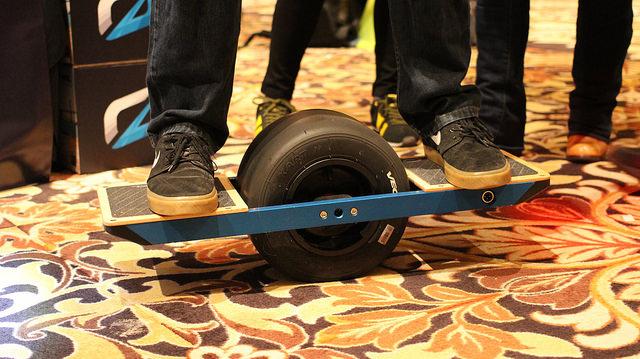
Whether you like them or not, electric scooters are destined to remain part of our urban transportation future. Enabled by ever improving and cheaper batteries, along with the convenience of being able to unlock them with your phone, they will continue to be a compelling choice for city dwellers who find themselves in a hurry.
They also solve the eternal logistics challenge of moving people over the “first and last mile.” The usefulness of public transportation has always been limited by only being able to move people from either bus stop to bus stop, or train station to train station. But mass transit rarely picks you up where you are, or gets you exactly where you need to go.
Mobility solutions for the first and last mile have consequently become a booming business, and this segment has come to be known as the “micro-mobility” market.
Micro-mobility transportation solutions have been defined as those which can carry one or two passengers and includes both traditional options - such as bicycles - along with the battery-powered newcomers including e-bikes, scooters and even small electric cars.
Additionally, micro-mobility devices encompass other even smaller-sized innovations such as electric skateboards, and even a one-wheeled skateboard with a large central wheel in the middle of the deck: as in one designed by Future Motion, which claims is recreating the feeling of snowboarding on fresh powder.
Such has been the growth of these last mile transportation solutions that some are calling it the micro-mobility revolution, and it’s happening despite the well known disdain many members of the public have for electric scooters. The detractors, though, are actually in the minority.
In an interview conducted by radio station WBUR in August with transportation expert Regina Clewlow, she said 70 percent of people in major U.S. cities view the omnipresent electric scooters scooters positively. And because people have become accustomed to hailing an Uber or Lyft with their phones, unlocking these devices in a similar fashion has become second nature. But of course, the scooter rental model isn’t the only game in town.
In the case of Future Motion’s “Onewheel” product, there is no option for app-based commercial rental. If you want to ride one of these, you’ll need to buy the $1,400 device directly from the company. Financial backers nonetheless see the company’s business model as a viable one, with Future Motion having secured $7 million in funding, according to an article recently published in Inc. And unlike most technology products, including pretty much all of the battery-powered scooters you see on city streets, the Onewheel is made in the USA.
Selling to the consumer means Future Motion’s business model depends on building a brand around the device rather than (in the case of scooter rental companies) building a brand around the app.
And there’s a case to be made for private ownership of micro-mobility devices over the rental model. For example, consider whether electric scooters would be less frowned upon if the devices were taken care of by their owner rather than used and then left - or according to critics - discarded on the sidewalk.
One commenter writing on a scooter rental company’s Facebook page recently observed that scooter rental defeats the main benefit a scooter has in the first place; that as a small vehicle, it can be taken into the workplace with you and doesn’t need to be secured or left outside. Indeed, if scooter riders folded up and took their scooters into the office, it would alleviate one of the main complaints they’ve attracted - the haphazard abandonment of the devices, posing a hazard to pedestrians.
Another commenter disliked the fact that a private scooter rental company is locking their scooters to city-provided bicycle parking, arguing that the for-profit company is piggybacking on publicly-funded infrastructure. Furthermore, all scooter rental companies are finding challenges in navigating regulations, which impede acceptance by host cities.
These problems aside, however, we’ve written before that responsible growth will almost certainly secure the place of scooter rental operations going forward, and the financial backing is in place.
And arguably, of course, personal ownership is a less sustainable model than a shared-by-the minute rental model, but as we’ve learned, if people are throwing scooters into the ocean or destroying them, the rental model isn’t without waste. Furthermore, in China, an oversupply of bicycles in bike share programs has resulted in literally mountains of discarded bikes; check out the photo included in this article in The Atlantic.
No doubt though, we can expect the micro-mobility market to continue to be made up of both the fleet operators and those that prefer private ownership. And new types of devices will no doubt be added to the mix as well. As the founder of Future Motion told Inc., “It’s not a winner-take-all. Different people have very different personalities and values and want to ride different things. That’s what allows this to be a vibrant space.”
Image credit: Maurizio Pesce/Flickr

Phil Covington holds an MBA in Sustainable Management from Presidio Graduate School. In the past, he spent 16 years in the freight transportation and logistics industry. Today, Phil's writing focuses on transportation, forestry, technology and matters of sustainability in business.














